Engaging Young Minds Through Mathematical Play
Discover the benefits of playful approaches in maths education to enhance engagement, boost comprehension, and foster a love for learning in children.


Discover the benefits of playful approaches in maths education to enhance engagement, boost comprehension, and foster a love for learning in children.
Mathematics can often seem intimidating to young learners, but what if there was a way to make it fun and engaging? Playful learning transforms the often rigid walls of mathematics into an inviting playground filled with exploration and creativity.
Research suggests that integrating play with mathematical concepts not only enhances understanding but also fosters a deeper love for the subject. From toddlers discovering numbers through musical rhythms to preschoolers solving problems with storytelling, every playful interaction promotes critical thinking and problem-solving skills.
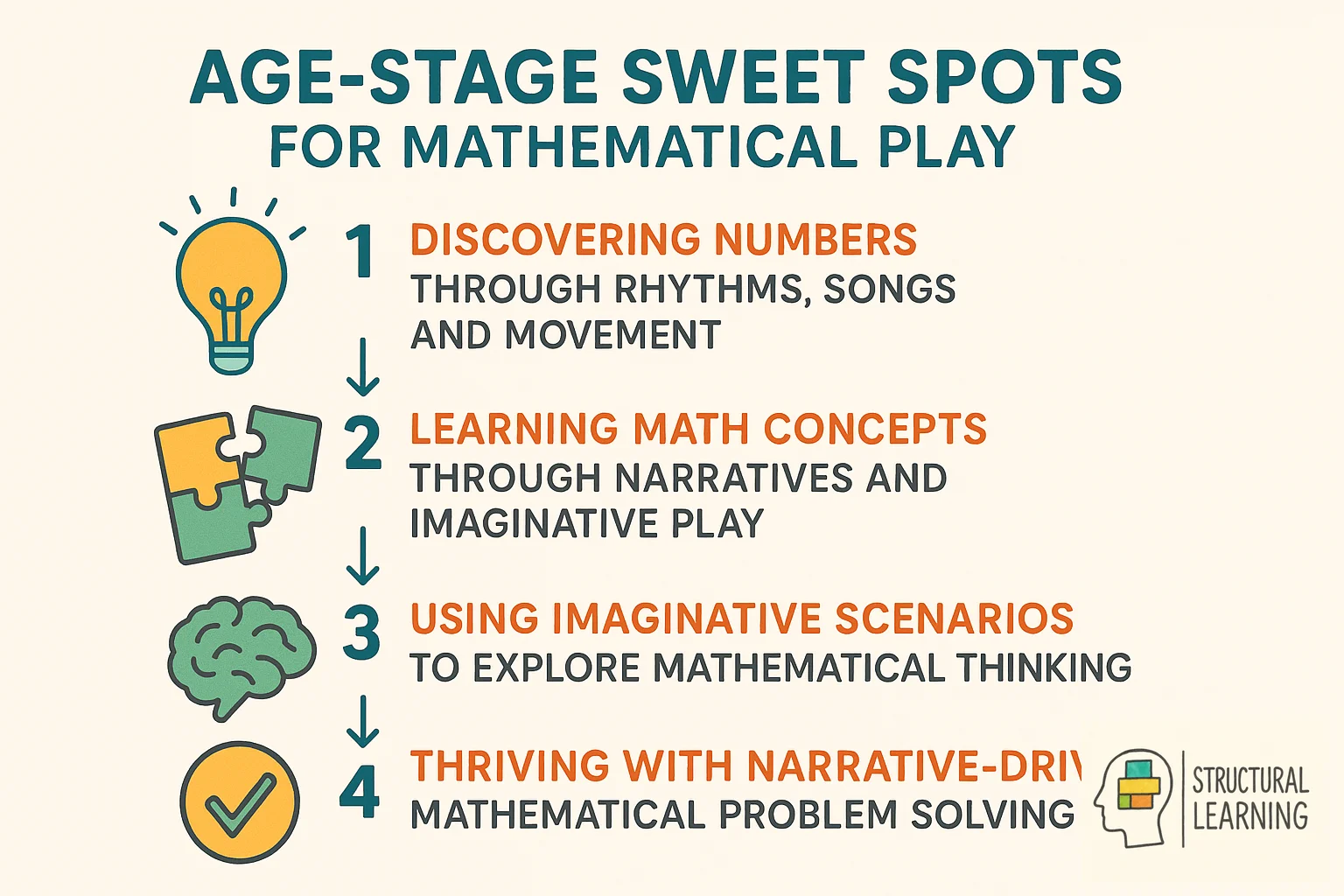
This article delves into the numerous benefits of playful engagement in math, various strategies for incorporating play into learning, and age-appropriate activities that parents and educators can undertake to nurture young minds in the world of mathematics.
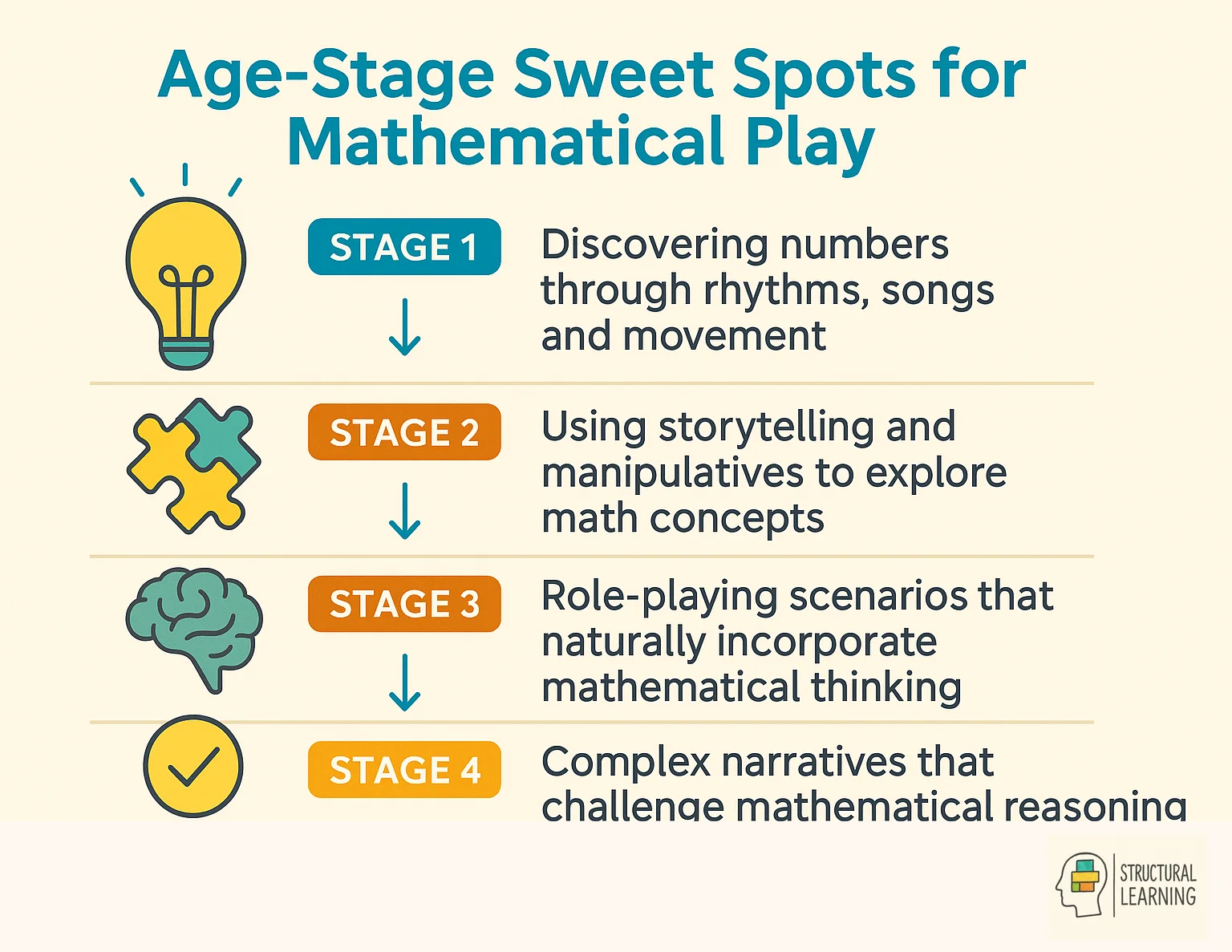
Playful math engagement transforms reluctant learners into enthusiastic problem-solvers by making abstract concepts concrete and accessible. Research shows that game-based learning enhances mathematical understanding while fostering a deeper love for the subject. Children develop critical thinking and problem-solving skills naturally through interactive experiences that feel instinctive and fun.

The integration of mathematical play into childhood education is a key element in nurturing a robust cognitive foundation for math skills. Short, interactive experiences offer learners a scaffolded approach to absorb mathematical ideas in a way that feels instinctive and fun, laying a groundwork for passion in the subject.
Engaging children in activities with manipulatives, objects that allow them to visualize abstract concepts, is paramount. These tactile experiences translate complex concepts into physical form, making math less intimidating and more concrete.
Playful elements mixed into everyday activities such as snack time or clean-up imbue routine tasks with math fun. This interwoven approach demonstrates math's presence beyond academic endeavors, fostering a natural inclination towards mathematical thinking.
Considering developmental stages in play-based math activities is imperative for tailored learning experiences. Such age-appropriate engagements underscore the importance of each stage of childhood mathematics education and ensure profound cognitive engagement.
Children's everyday EM skills often bloom in playful environments where math expressions manifest through informal play, recognizing patterns or sorting shapes. This points to the significance of a supportive environment where mathematical learning feels like discovery rather than forced instruction.
A playful learning setting is a crucible for development, inviting children to exercise critical and creative thinking. This kind of engagement prompts them to explore and construct mathematical content, a major aspect of developing a well-rounded grasp on mathematical concepts that will serve them throughout their grade levels and beyond.
Teachers can transform everyday activities like snack time, tidying up, and story sessions into mathematical learning opportunities that children don't realize are lessons. Using manipulatives such as blocks, beads, and everyday objects makes abstract mathematical concepts tangible and concrete. Game-based approaches work particularly well for pupils who struggle with traditional worksheet methods.
Finding ways to seamlessly integrate mathematics into the realm of play can transform the learning process, enhancing children's math fun and their capacity to understand and apply mathematical concepts. Below, explore strategies that sensitively blend math into playtime, creating an engaging and supportive environment for young minds to thrive.
Using the power of play, educators can translate traditional math lessons into game-based experiences, igniting a natural enthusiasm for the subject. These games might include a quest that incorporates sorting treasures by shape or size, or a fantasy market where children use counting and currency. By embedding a scoring system, children are motivated to apply basic arithmetic, thereby experiencing the thrill of competition paired with the satisfaction of problem-solving. In designing these games, it's essential to focus on creating an atmosphere bristling with excitement and challenge, which is conducive to fostering a genuine passion for math among students.
Manipulatives are the bridge between concrete experiences and abstract mathematical ideas for children. Through the use of blocks, beads, or digital counterparts, children can engage with foundational math operations such as addition and subtraction, and early concepts of multiplication and division. These hands-on activities provide a tangible understanding of math, turning an intimidating cluster of numbers into a playful interaction. For example, dice can serve as a fun tool for practicing multiplication facts, where rolling the dice and computing the product is part of a larger game concept.
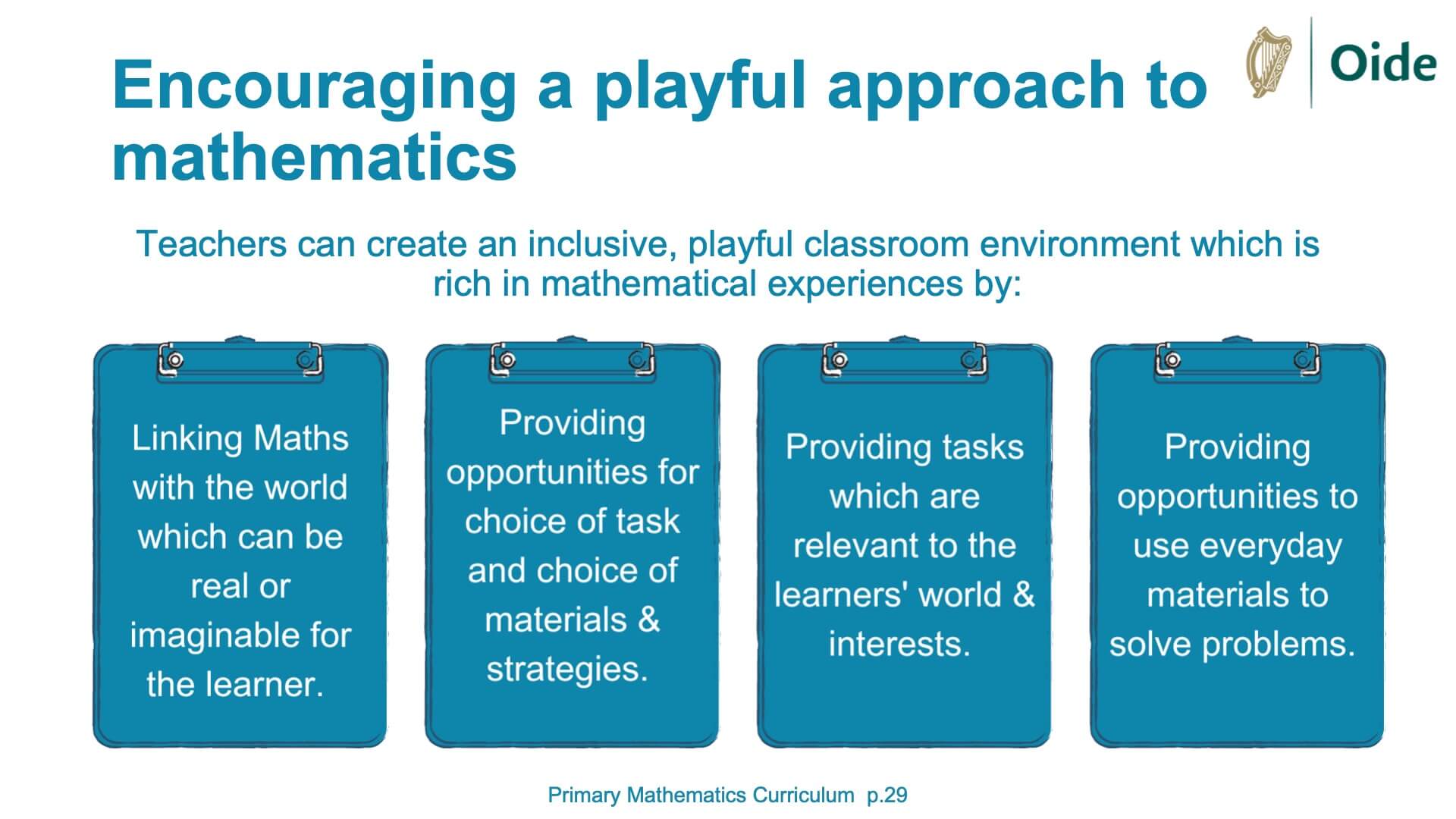
Narratives enrich mathematical concepts by infusing them with context and meaning. By weaving mathematical terms and ideas into the fabric of stories, children can grasp concepts like sequencing and value comparison within engaging scenarios.
When presented with questions such as determining the tallest structure they've built or the division of shared resources, children apply math in context, learning that mathematics is not simply about numbers but about the world they interact with. Educators can leverage the power of story to intertwine mathematical thought with the magic of narrative, making math both relatable and memorable.
Music has a profound capability to enhance memory and pattern recognition, key aspects of mathematics. Clapping or moving to a beat, children can learn to identify patterns and sequences, all within the joyful context of music. Songs dedicated to counting or mathematical operations can weave education and enjoyment together, encouraging active participation. With the rhythmic element acting as a mnemonic device, children can link auditory patterns with numerical understanding in a dynamic, melodic fashion.
Intertwining mathematics with play in these varied modes ensures that children see math not just as an academic endeavor but as an integral, enjoyable part of life. Each strategy builds upon the informal skills children develop through everyday mathematics, shaping a well-rounded foundation that enhances their cognitive growth and academic success.
Reception class children thrive with pretend play activities that introduce basic number concepts through imaginative scenarios. Year 2 students respond well to story-based problem solving that combines narrative with mathematical challenges. Toddlers benefit from discovering numbers through musical rhythms, while preschoolers excel at solving problems through storytelling approaches.
Mathematical play is a dynamic and critical vehicle for children, especially toddlers and preschoolers, to explore and build foundational math skills. Understanding that these early years are incredibly formative, educators and parents alike seek age-appropriate approaches in nurturing a child's innate curiosity about numbers and patterns. The key lies in integrating mathematical concepts seamlessly into everyday activities, making mathematics in children's daily lives an engaging and natural part of their world.
By tailoring activities to the developmental stage of a child, we ensure that mathematics is not only accessible but also fun. From pretend play to the simple act of setting a dinner table, these experiences lay a strong cognitive foundation for future academic endeavors. This incremental introduction of mathematical thinking helps children internalize concepts through play, a process that respects and aligns with the major aspects of their growing minds.
For toddlers, it is crucial to remember that engagement with math often occurs during playtime, as they begin to understand the world around them. Incorporating math skills into their play is both natural and effective.
Interactive activities that incorporate math naturally into playtime provide toddlers with foundational understanding and enjoyment of math.
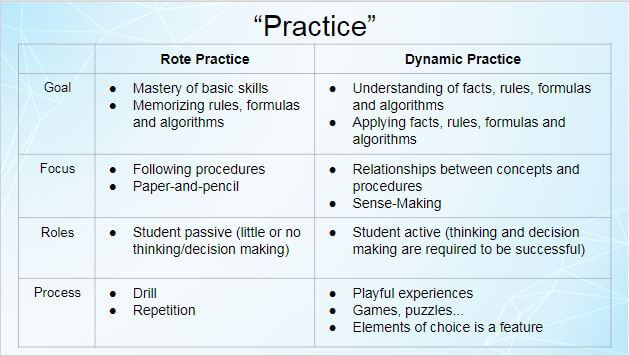
When children reach preschool age, mathematical play can become more structured, though it remains deeply rooted in their natural play activities and curiosity.
The incorporation of mathematical play at this stage retains the element of fun, ensuring children view math as an enjoyable and interesting part of their everyday activities. This type of engagement lays a strong foundation for later stages of education, where the abstract concepts often associated with mathematics are approached with less trepidation due to a positive early connection with mathematical play.
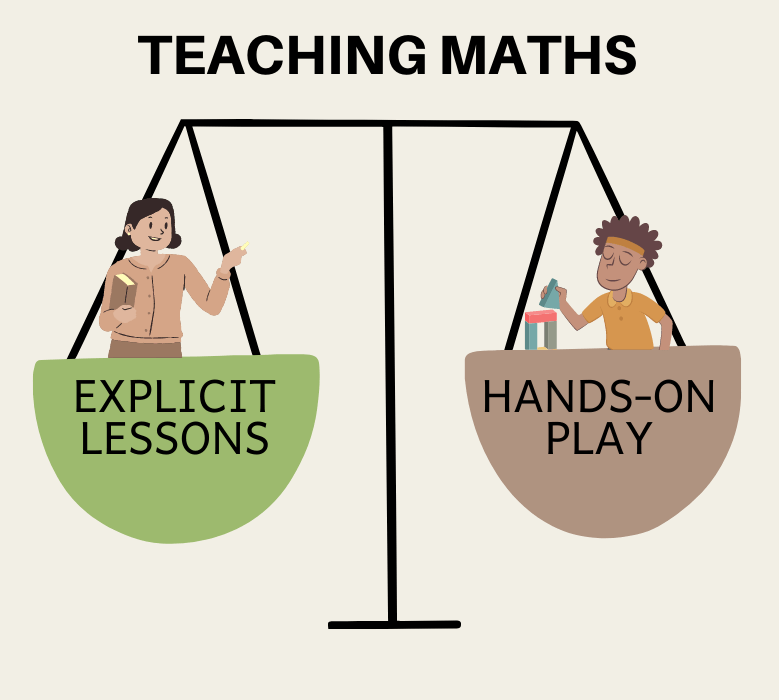
Mathematical language forms the foundation for conceptual understanding and must be naturally woven into play activities. Teachers should model precise mathematical vocabulary during hands-on experiences to help children articulate their thinking. Consistent use of mathematical terms during play helps children develop both computational skills and communication abilities.
The interweaving of mathematical language into everyday activities plays a crucial role in the development of math skills among children. Teachers and caregivers lay a cognitive foundation by using terms such as "more," "less," "equal," and "different" during interactive sorting games. This strategy connects abstract mathematical concepts with tangible items, bridging the gap between concrete experiences and complex concepts.
Narratives entwined with math-related language are also significant; stories and group discussions incorporating words like "add" and "subtract" offer a supportive environment for grasping math ideas within familiar contexts.
Furthermore, educators spur mathematical thinking through inquiry. Questions such as, "Which tower is taller?" or "Can you divide these crayons equally among your friends?" drive children to apply informal skills, anchoring their understanding of equality and measurement. This consistent use of mathematical vocabulary fosters a passion for math and equips children for future academic endeavors.
Overall, the confluence of environment and language in childhood mathematics education is pivotal. By reinforcing mathematical expressions during grade levels, educators provide remote access to mathematical content, ensuring children's immediate comprehension and readiness for more advanced concepts.

Effective playful math resources include manipulatives like counting bears, pattern blocks, and everyday objects that make abstract concepts concrete. Digital games and apps can supplement hands-on learning when they focus on problem-solving rather than drill practice. Story books with mathematical themes and outdoor exploration activities provide rich contexts for mathematical discovery.
To make math playful and engaging, it's important to use resources that capture children's imagination and curiosity. Here are nine excellent platforms that can help children practice key number concepts through math games and interactive activities.
1. Google Classroom: This versatile platform can be tailored for math education by integrating various apps and resources. Teachers can assign math games, interactive lessons, and quizzes, making it suitable for all age groups and curriculums.
2. Nessy: Primarily designed for younger children and those with learning difficulties, Nessy offers a range of math games that make learning fun and accessible. It focuses on foundational skills like number recognition and basic arithmetic.
3. Times Tables Rock Stars (TTRS): Perfect for primary school students, TTRS gamifies the practice of multiplication tables. Children can compete in rock-themed battles, making the repetitive task of memorizing tables exciting and engaging.
4. Hegarty Maths: Aimed at secondary school students, Hegarty Maths offers detailed video lessons and quizzes aligned with the UK curriculum. It’s ideal for reinforcing classroom learning and providing additional practice at home.
5. MyMaths: Suitable for both primary and secondary students, MyMaths provides interactive lessons and homework tasks. Its math games and challenges help solidify concepts through practice and repetition.
6. White Rose Maths: This platform offers a comprehensive range of resources for primary and secondary education. With schemes of learning, assessments, and math games, White Rose Maths supports a mastery approach to teaching mathematics.
7. Mathsframe: Designed for primary students, Mathsframe includes over 200 interactive math games and activities. These games cover various topics like fractions, times tables, and place value, aligned with the UK curriculum.
8. Numicon: Though not an online platform, Numicon deserves special mention. This multi-sensory resource helps children understand number relationships through hands-on activities. It’s particularly effective for younger children and those with special educational needs.
9. Khan Academy: An excellent free resource for all ages, Khan Academy offers video lessons, practice exercises, and personalized learning dashboards. Its math section is comprehensive, covering everything from basic arithmetic to advanced calculus.
These platforms provide a variety of engaging ways to integrate math games into your teaching, ensuring that children not only learn but also enjoy mathematics.
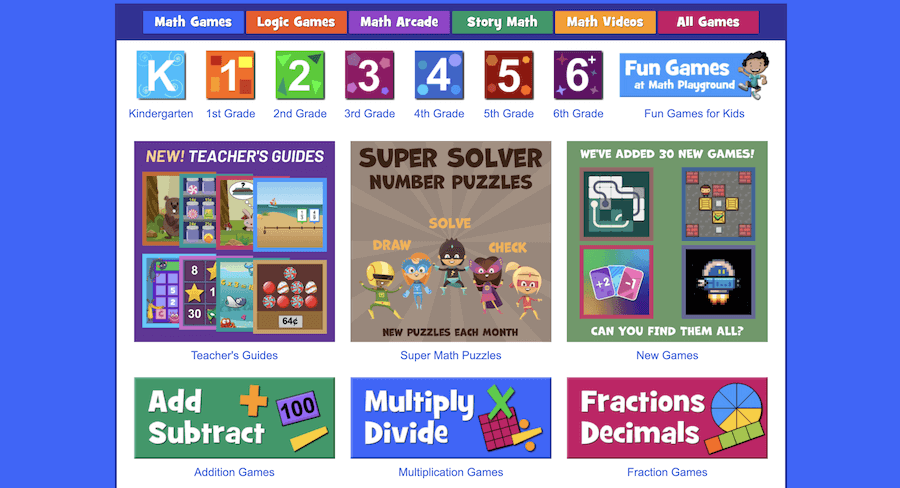
Teachers can address reluctant learners by starting with low-stakes games that build confidence before introducing more complex concepts. Time constraints can be managed by integrating mathematical thinking into existing activities rather than creating separate play sessions. Classroom management improves when clear routines and expectations are established for play-based learning activities.
The art of teaching mathematics encompasses more than the mere impartation of mathematical content; it requires a harmonious blend of strategy, patience, and creativity. Addressing common teaching challenges begins with acknowledging the distinctive learning preferences of children. Each child's cognitive foundation is built differently, thus demanding tailored approaches.
Visual aids, storytelling, and hands-on activities represent a multifaceted approach to mathematical learning, catering to the diverse needs of middle school students and enhancing their passion for math. Through these varied methods, abstract concepts become tangible, thus easing comprehension. Moreover, by breaking down complex concepts into smaller constituents, mathematical ideas become less daunting, thereby fostering math fun.
Group activities are an integral aspect of children's learning, presenting opportunities for mathematical play. Such collaborative endeavors encourage peer-to-peer learning, further solidifying math skills and mathematical thinking. This supportive environment plays a significant role in childhood mathematics education, elevating it from an academic endeavor to an engaging exploration of everyday mathematics.
Effective math education, therefore, is not a linear journey but an intricate dance, a confluence of environment, informal skills, and tailored techniques that together sculpt the mathematical minds of the future.

Parents can incorporate mathematical thinking into daily routines like cooking, shopping, and household chores without formal lessons. Simple games using dice, cards, or counting objects during family time reinforce school learning naturally. Encouraging mathematical conversations about patterns, quantities, and problem-solving during everyday activities builds lasting foundations.
Involving parents in their child's math education can significantly enhance learning outcomes. Here are five practical ways to engage parents, especially those who may feel apprehensive about math.
1. Counting Games: Encourage parents to integrate counting games into daily activities. Simple board games or playful counting challenges can make math fun and relatable. Example: Counting steps while climbing stairs or adding up points in a game of dominoes.
2. Cooking Together: Cooking offers a practical way to teach math through measuring ingredients, following recipes, and understanding proportions. Example: Parents can involve children in measuring flour for baking, which reinforces fractions and volume measurements.
3. Budgeting During Shopping: Grocery shopping can be a valuable math lesson. Involving children in budgeting and comparing prices helps them apply math skills in real-world scenarios. Example: Ask children to calculate the total cost of items in the cart or compare prices per unit to find the best deal.
4. Field Trips to Local Sites: Visiting places like grocery stores or banks can help children see the practical applications of math. These trips anchor mathematical concepts in real-life experiences. Example: During a bank visit, parents can explain interest rates and savings, connecting classroom math to financial literacy.
5. Using Remote Access Tools: Digital tools like Prodigy Math provide interactive environments where children can practice math in engaging ways. These platforms often include games and activities that make learning fun. Example: Encourage parents to explore educational apps and websites that offer math games aligned with the school curriculum.
By integrating these activities into their routine, parents can support their child's math education in a practical, enjoyable manner.

Research consistently shows that play-based mathematical approaches enhance both understanding and retention compared to traditional methods. Studies indicate that children who learn math through play develop stronger problem-solving skills and maintain greater enthusiasm for the subject. Evidence demonstrates that playful learning is particularly effective for SEND pupils who need tangible, multi-sensory learning experiences.
Integrating playful mathematical approaches, such as games and activities, into the classroom can significantly impact students' understanding and engagement with both basic and advanced math concepts. These studies explore the efficacy of such methods in fostering confidence in math and enhancing foundational math concepts through daily math exercises and interactive learning.
1. Bragg, L. A. (2012). Testing the effectiveness of mathematical games as a pedagogical tool for children’s learning. International Journal of Science and Mathematics Education, 10, 1445-1467.
Summary: This study compares the effectiveness of non-digital mathematical games with engaging non-game activities for teaching multiplication and division of decimals. Results indicate that while games can be fun, they did not significantly improve mathematical understanding under test conditions compared to non-game activities, suggesting careful consideration in their application.
2. Alvarez-Vargas, D., Lopez Perez, J. P., Bermudez, V., Beltrán Grimm, S., Santana, E., Begolli, K., & Bustamante, A. (2023). Evidence-based designs for physically active and playful math learning. Theory Into Practice, 62, 166-180.
Summary: This study demonstrates how teacher-guided, playful learning activities can optimize learning opportunities in math. Using examples of whole number and rational number games, the study shows that such activities enhance student engagement and learning outcomes by integrating physical activity with math practice.
3. Hung, C.-M., Huang, I., & Hwang, G.-J. (2014). Effects of digital game-based learning on students’ self-efficacy, motivation, anxiety, and achievements in learning mathematics. Journal of Computers in Education, 1, 151-166.
Summary: This study developed a mathematical game-based learning environment to reduce math anxiety and improve self-efficacy, motivation, and achievement. The game-based approach was found to significantly enhance students' confidence in math and learning outcomes, though it did not significantly impact math anxiety.
4. Jaleel, S., & Titus, B. (2016). Effectiveness of Gaming Strategy on Mathematical Creativity of Students at Secondary Level. Indian Journal of Applied Research, 5.
Summary: The study evaluates the impact of gaming strategies on developing mathematical creativity among secondary school students. Findings suggest that gaming strategies are more effective than traditional methods in fostering mathematical creativity and engagement, promoting a deeper understanding of math concepts.
5. Fernández-Oliveras, A., Espigares-Gámez, M. J., & Oliveras, M. L. (2021). Implementation of a playful microproject based on traditional games for working on mathematical and scientific content. Education Sciences.
Summary: This research investigates the use of traditional games to teach mathematical and scientific concepts to primary school students. The playful microproject showed significant improvement in students' ability to classify, organize, measure, and quantify, demonstrating the potential of games to enhance both cognitive and practical skills in math and science.
These studies collectively highlight the benefits and challenges of incorporating playful mathematical approaches in education. They emphasize the importance of well-designed activities that align with learning goals and the potential of games to improve student engagement and understanding of math concepts.
Mathematics can often seem intimidating to young learners, but what if there was a way to make it fun and engaging? Playful learning transforms the often rigid walls of mathematics into an inviting playground filled with exploration and creativity.
Research suggests that integrating play with mathematical concepts not only enhances understanding but also fosters a deeper love for the subject. From toddlers discovering numbers through musical rhythms to preschoolers solving problems with storytelling, every playful interaction promotes critical thinking and problem-solving skills.

This article delves into the numerous benefits of playful engagement in math, various strategies for incorporating play into learning, and age-appropriate activities that parents and educators can undertake to nurture young minds in the world of mathematics.

Playful math engagement transforms reluctant learners into enthusiastic problem-solvers by making abstract concepts concrete and accessible. Research shows that game-based learning enhances mathematical understanding while fostering a deeper love for the subject. Children develop critical thinking and problem-solving skills naturally through interactive experiences that feel instinctive and fun.

The integration of mathematical play into childhood education is a key element in nurturing a robust cognitive foundation for math skills. Short, interactive experiences offer learners a scaffolded approach to absorb mathematical ideas in a way that feels instinctive and fun, laying a groundwork for passion in the subject.
Engaging children in activities with manipulatives, objects that allow them to visualize abstract concepts, is paramount. These tactile experiences translate complex concepts into physical form, making math less intimidating and more concrete.
Playful elements mixed into everyday activities such as snack time or clean-up imbue routine tasks with math fun. This interwoven approach demonstrates math's presence beyond academic endeavors, fostering a natural inclination towards mathematical thinking.
Considering developmental stages in play-based math activities is imperative for tailored learning experiences. Such age-appropriate engagements underscore the importance of each stage of childhood mathematics education and ensure profound cognitive engagement.
Children's everyday EM skills often bloom in playful environments where math expressions manifest through informal play, recognizing patterns or sorting shapes. This points to the significance of a supportive environment where mathematical learning feels like discovery rather than forced instruction.
A playful learning setting is a crucible for development, inviting children to exercise critical and creative thinking. This kind of engagement prompts them to explore and construct mathematical content, a major aspect of developing a well-rounded grasp on mathematical concepts that will serve them throughout their grade levels and beyond.
Teachers can transform everyday activities like snack time, tidying up, and story sessions into mathematical learning opportunities that children don't realize are lessons. Using manipulatives such as blocks, beads, and everyday objects makes abstract mathematical concepts tangible and concrete. Game-based approaches work particularly well for pupils who struggle with traditional worksheet methods.
Finding ways to seamlessly integrate mathematics into the realm of play can transform the learning process, enhancing children's math fun and their capacity to understand and apply mathematical concepts. Below, explore strategies that sensitively blend math into playtime, creating an engaging and supportive environment for young minds to thrive.
Using the power of play, educators can translate traditional math lessons into game-based experiences, igniting a natural enthusiasm for the subject. These games might include a quest that incorporates sorting treasures by shape or size, or a fantasy market where children use counting and currency. By embedding a scoring system, children are motivated to apply basic arithmetic, thereby experiencing the thrill of competition paired with the satisfaction of problem-solving. In designing these games, it's essential to focus on creating an atmosphere bristling with excitement and challenge, which is conducive to fostering a genuine passion for math among students.
Manipulatives are the bridge between concrete experiences and abstract mathematical ideas for children. Through the use of blocks, beads, or digital counterparts, children can engage with foundational math operations such as addition and subtraction, and early concepts of multiplication and division. These hands-on activities provide a tangible understanding of math, turning an intimidating cluster of numbers into a playful interaction. For example, dice can serve as a fun tool for practicing multiplication facts, where rolling the dice and computing the product is part of a larger game concept.

Narratives enrich mathematical concepts by infusing them with context and meaning. By weaving mathematical terms and ideas into the fabric of stories, children can grasp concepts like sequencing and value comparison within engaging scenarios.
When presented with questions such as determining the tallest structure they've built or the division of shared resources, children apply math in context, learning that mathematics is not simply about numbers but about the world they interact with. Educators can leverage the power of story to intertwine mathematical thought with the magic of narrative, making math both relatable and memorable.
Music has a profound capability to enhance memory and pattern recognition, key aspects of mathematics. Clapping or moving to a beat, children can learn to identify patterns and sequences, all within the joyful context of music. Songs dedicated to counting or mathematical operations can weave education and enjoyment together, encouraging active participation. With the rhythmic element acting as a mnemonic device, children can link auditory patterns with numerical understanding in a dynamic, melodic fashion.
Intertwining mathematics with play in these varied modes ensures that children see math not just as an academic endeavor but as an integral, enjoyable part of life. Each strategy builds upon the informal skills children develop through everyday mathematics, shaping a well-rounded foundation that enhances their cognitive growth and academic success.
Reception class children thrive with pretend play activities that introduce basic number concepts through imaginative scenarios. Year 2 students respond well to story-based problem solving that combines narrative with mathematical challenges. Toddlers benefit from discovering numbers through musical rhythms, while preschoolers excel at solving problems through storytelling approaches.
Mathematical play is a dynamic and critical vehicle for children, especially toddlers and preschoolers, to explore and build foundational math skills. Understanding that these early years are incredibly formative, educators and parents alike seek age-appropriate approaches in nurturing a child's innate curiosity about numbers and patterns. The key lies in integrating mathematical concepts seamlessly into everyday activities, making mathematics in children's daily lives an engaging and natural part of their world.
By tailoring activities to the developmental stage of a child, we ensure that mathematics is not only accessible but also fun. From pretend play to the simple act of setting a dinner table, these experiences lay a strong cognitive foundation for future academic endeavors. This incremental introduction of mathematical thinking helps children internalize concepts through play, a process that respects and aligns with the major aspects of their growing minds.
For toddlers, it is crucial to remember that engagement with math often occurs during playtime, as they begin to understand the world around them. Incorporating math skills into their play is both natural and effective.
Interactive activities that incorporate math naturally into playtime provide toddlers with foundational understanding and enjoyment of math.

When children reach preschool age, mathematical play can become more structured, though it remains deeply rooted in their natural play activities and curiosity.
The incorporation of mathematical play at this stage retains the element of fun, ensuring children view math as an enjoyable and interesting part of their everyday activities. This type of engagement lays a strong foundation for later stages of education, where the abstract concepts often associated with mathematics are approached with less trepidation due to a positive early connection with mathematical play.

Mathematical language forms the foundation for conceptual understanding and must be naturally woven into play activities. Teachers should model precise mathematical vocabulary during hands-on experiences to help children articulate their thinking. Consistent use of mathematical terms during play helps children develop both computational skills and communication abilities.
The interweaving of mathematical language into everyday activities plays a crucial role in the development of math skills among children. Teachers and caregivers lay a cognitive foundation by using terms such as "more," "less," "equal," and "different" during interactive sorting games. This strategy connects abstract mathematical concepts with tangible items, bridging the gap between concrete experiences and complex concepts.
Narratives entwined with math-related language are also significant; stories and group discussions incorporating words like "add" and "subtract" offer a supportive environment for grasping math ideas within familiar contexts.
Furthermore, educators spur mathematical thinking through inquiry. Questions such as, "Which tower is taller?" or "Can you divide these crayons equally among your friends?" drive children to apply informal skills, anchoring their understanding of equality and measurement. This consistent use of mathematical vocabulary fosters a passion for math and equips children for future academic endeavors.
Overall, the confluence of environment and language in childhood mathematics education is pivotal. By reinforcing mathematical expressions during grade levels, educators provide remote access to mathematical content, ensuring children's immediate comprehension and readiness for more advanced concepts.

Effective playful math resources include manipulatives like counting bears, pattern blocks, and everyday objects that make abstract concepts concrete. Digital games and apps can supplement hands-on learning when they focus on problem-solving rather than drill practice. Story books with mathematical themes and outdoor exploration activities provide rich contexts for mathematical discovery.
To make math playful and engaging, it's important to use resources that capture children's imagination and curiosity. Here are nine excellent platforms that can help children practice key number concepts through math games and interactive activities.
1. Google Classroom: This versatile platform can be tailored for math education by integrating various apps and resources. Teachers can assign math games, interactive lessons, and quizzes, making it suitable for all age groups and curriculums.
2. Nessy: Primarily designed for younger children and those with learning difficulties, Nessy offers a range of math games that make learning fun and accessible. It focuses on foundational skills like number recognition and basic arithmetic.
3. Times Tables Rock Stars (TTRS): Perfect for primary school students, TTRS gamifies the practice of multiplication tables. Children can compete in rock-themed battles, making the repetitive task of memorizing tables exciting and engaging.
4. Hegarty Maths: Aimed at secondary school students, Hegarty Maths offers detailed video lessons and quizzes aligned with the UK curriculum. It’s ideal for reinforcing classroom learning and providing additional practice at home.
5. MyMaths: Suitable for both primary and secondary students, MyMaths provides interactive lessons and homework tasks. Its math games and challenges help solidify concepts through practice and repetition.
6. White Rose Maths: This platform offers a comprehensive range of resources for primary and secondary education. With schemes of learning, assessments, and math games, White Rose Maths supports a mastery approach to teaching mathematics.
7. Mathsframe: Designed for primary students, Mathsframe includes over 200 interactive math games and activities. These games cover various topics like fractions, times tables, and place value, aligned with the UK curriculum.
8. Numicon: Though not an online platform, Numicon deserves special mention. This multi-sensory resource helps children understand number relationships through hands-on activities. It’s particularly effective for younger children and those with special educational needs.
9. Khan Academy: An excellent free resource for all ages, Khan Academy offers video lessons, practice exercises, and personalized learning dashboards. Its math section is comprehensive, covering everything from basic arithmetic to advanced calculus.
These platforms provide a variety of engaging ways to integrate math games into your teaching, ensuring that children not only learn but also enjoy mathematics.

Teachers can address reluctant learners by starting with low-stakes games that build confidence before introducing more complex concepts. Time constraints can be managed by integrating mathematical thinking into existing activities rather than creating separate play sessions. Classroom management improves when clear routines and expectations are established for play-based learning activities.
The art of teaching mathematics encompasses more than the mere impartation of mathematical content; it requires a harmonious blend of strategy, patience, and creativity. Addressing common teaching challenges begins with acknowledging the distinctive learning preferences of children. Each child's cognitive foundation is built differently, thus demanding tailored approaches.
Visual aids, storytelling, and hands-on activities represent a multifaceted approach to mathematical learning, catering to the diverse needs of middle school students and enhancing their passion for math. Through these varied methods, abstract concepts become tangible, thus easing comprehension. Moreover, by breaking down complex concepts into smaller constituents, mathematical ideas become less daunting, thereby fostering math fun.
Group activities are an integral aspect of children's learning, presenting opportunities for mathematical play. Such collaborative endeavors encourage peer-to-peer learning, further solidifying math skills and mathematical thinking. This supportive environment plays a significant role in childhood mathematics education, elevating it from an academic endeavor to an engaging exploration of everyday mathematics.
Effective math education, therefore, is not a linear journey but an intricate dance, a confluence of environment, informal skills, and tailored techniques that together sculpt the mathematical minds of the future.

Parents can incorporate mathematical thinking into daily routines like cooking, shopping, and household chores without formal lessons. Simple games using dice, cards, or counting objects during family time reinforce school learning naturally. Encouraging mathematical conversations about patterns, quantities, and problem-solving during everyday activities builds lasting foundations.
Involving parents in their child's math education can significantly enhance learning outcomes. Here are five practical ways to engage parents, especially those who may feel apprehensive about math.
1. Counting Games: Encourage parents to integrate counting games into daily activities. Simple board games or playful counting challenges can make math fun and relatable. Example: Counting steps while climbing stairs or adding up points in a game of dominoes.
2. Cooking Together: Cooking offers a practical way to teach math through measuring ingredients, following recipes, and understanding proportions. Example: Parents can involve children in measuring flour for baking, which reinforces fractions and volume measurements.
3. Budgeting During Shopping: Grocery shopping can be a valuable math lesson. Involving children in budgeting and comparing prices helps them apply math skills in real-world scenarios. Example: Ask children to calculate the total cost of items in the cart or compare prices per unit to find the best deal.
4. Field Trips to Local Sites: Visiting places like grocery stores or banks can help children see the practical applications of math. These trips anchor mathematical concepts in real-life experiences. Example: During a bank visit, parents can explain interest rates and savings, connecting classroom math to financial literacy.
5. Using Remote Access Tools: Digital tools like Prodigy Math provide interactive environments where children can practice math in engaging ways. These platforms often include games and activities that make learning fun. Example: Encourage parents to explore educational apps and websites that offer math games aligned with the school curriculum.
By integrating these activities into their routine, parents can support their child's math education in a practical, enjoyable manner.

Research consistently shows that play-based mathematical approaches enhance both understanding and retention compared to traditional methods. Studies indicate that children who learn math through play develop stronger problem-solving skills and maintain greater enthusiasm for the subject. Evidence demonstrates that playful learning is particularly effective for SEND pupils who need tangible, multi-sensory learning experiences.
Integrating playful mathematical approaches, such as games and activities, into the classroom can significantly impact students' understanding and engagement with both basic and advanced math concepts. These studies explore the efficacy of such methods in fostering confidence in math and enhancing foundational math concepts through daily math exercises and interactive learning.
1. Bragg, L. A. (2012). Testing the effectiveness of mathematical games as a pedagogical tool for children’s learning. International Journal of Science and Mathematics Education, 10, 1445-1467.
Summary: This study compares the effectiveness of non-digital mathematical games with engaging non-game activities for teaching multiplication and division of decimals. Results indicate that while games can be fun, they did not significantly improve mathematical understanding under test conditions compared to non-game activities, suggesting careful consideration in their application.
2. Alvarez-Vargas, D., Lopez Perez, J. P., Bermudez, V., Beltrán Grimm, S., Santana, E., Begolli, K., & Bustamante, A. (2023). Evidence-based designs for physically active and playful math learning. Theory Into Practice, 62, 166-180.
Summary: This study demonstrates how teacher-guided, playful learning activities can optimize learning opportunities in math. Using examples of whole number and rational number games, the study shows that such activities enhance student engagement and learning outcomes by integrating physical activity with math practice.
3. Hung, C.-M., Huang, I., & Hwang, G.-J. (2014). Effects of digital game-based learning on students’ self-efficacy, motivation, anxiety, and achievements in learning mathematics. Journal of Computers in Education, 1, 151-166.
Summary: This study developed a mathematical game-based learning environment to reduce math anxiety and improve self-efficacy, motivation, and achievement. The game-based approach was found to significantly enhance students' confidence in math and learning outcomes, though it did not significantly impact math anxiety.
4. Jaleel, S., & Titus, B. (2016). Effectiveness of Gaming Strategy on Mathematical Creativity of Students at Secondary Level. Indian Journal of Applied Research, 5.
Summary: The study evaluates the impact of gaming strategies on developing mathematical creativity among secondary school students. Findings suggest that gaming strategies are more effective than traditional methods in fostering mathematical creativity and engagement, promoting a deeper understanding of math concepts.
5. Fernández-Oliveras, A., Espigares-Gámez, M. J., & Oliveras, M. L. (2021). Implementation of a playful microproject based on traditional games for working on mathematical and scientific content. Education Sciences.
Summary: This research investigates the use of traditional games to teach mathematical and scientific concepts to primary school students. The playful microproject showed significant improvement in students' ability to classify, organize, measure, and quantify, demonstrating the potential of games to enhance both cognitive and practical skills in math and science.
These studies collectively highlight the benefits and challenges of incorporating playful mathematical approaches in education. They emphasize the importance of well-designed activities that align with learning goals and the potential of games to improve student engagement and understanding of math concepts.